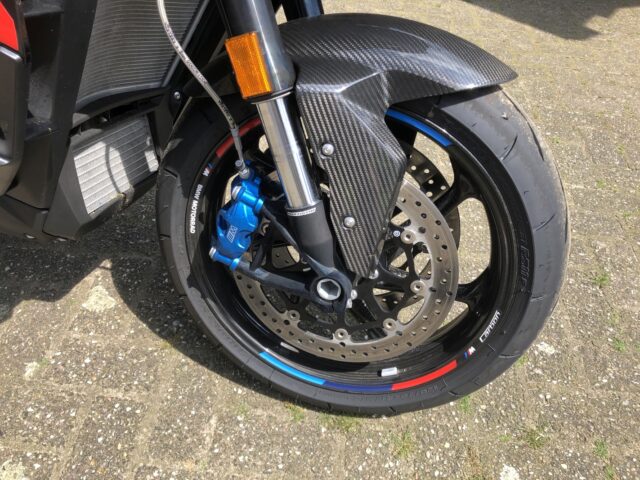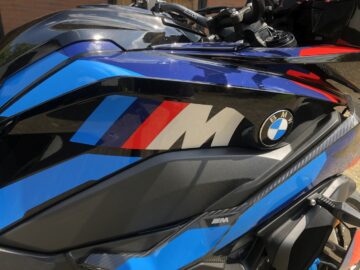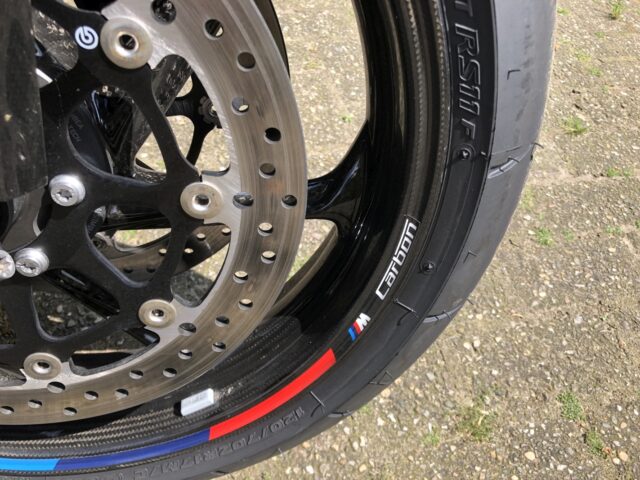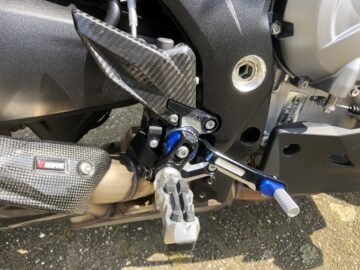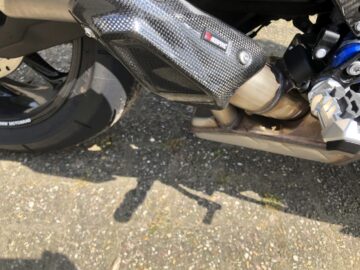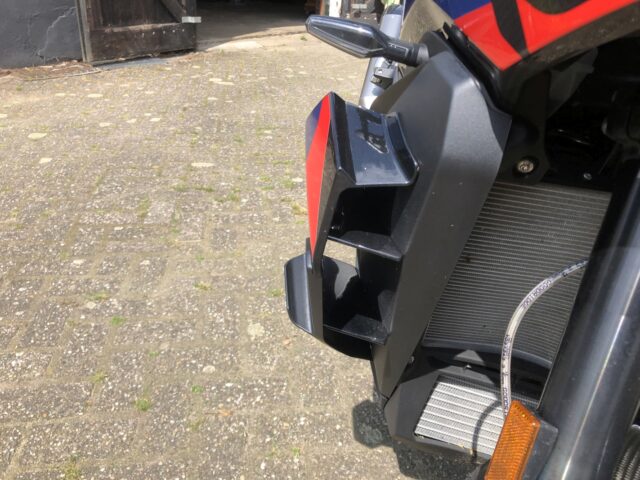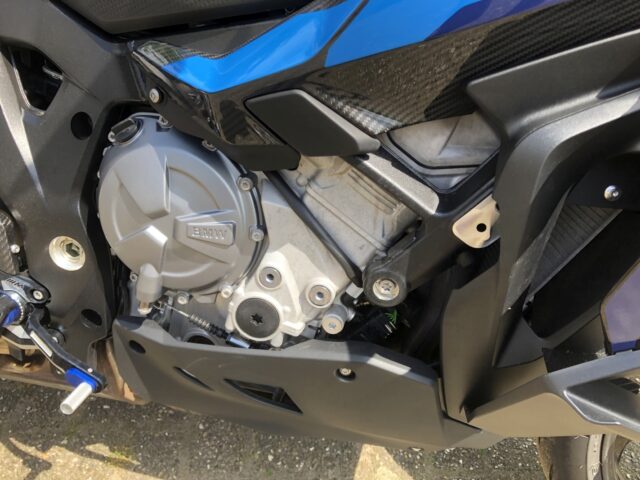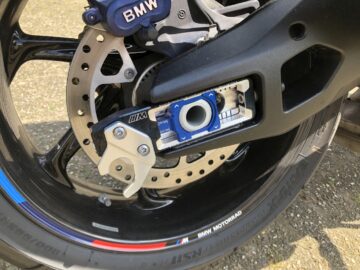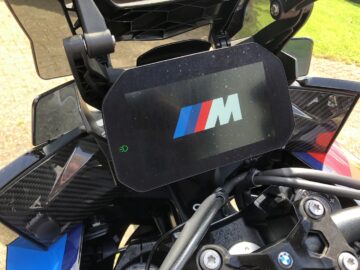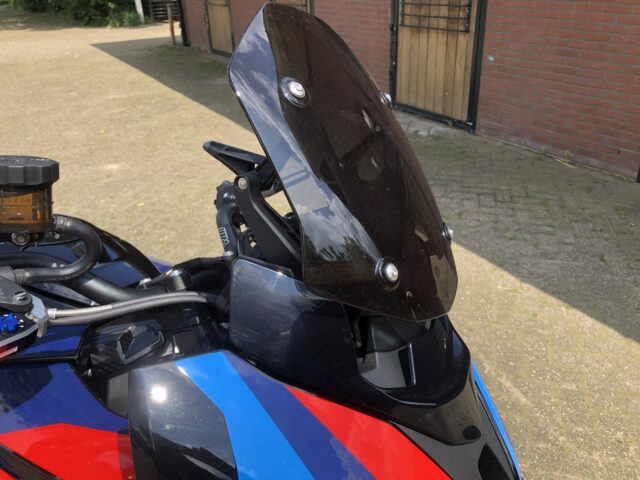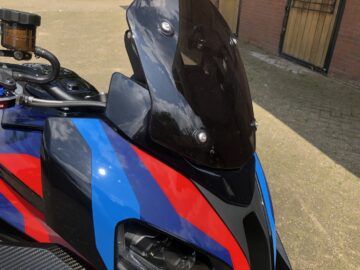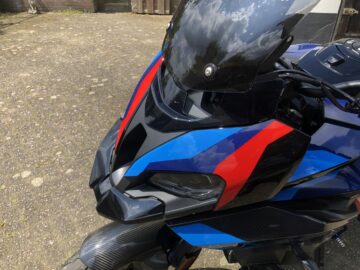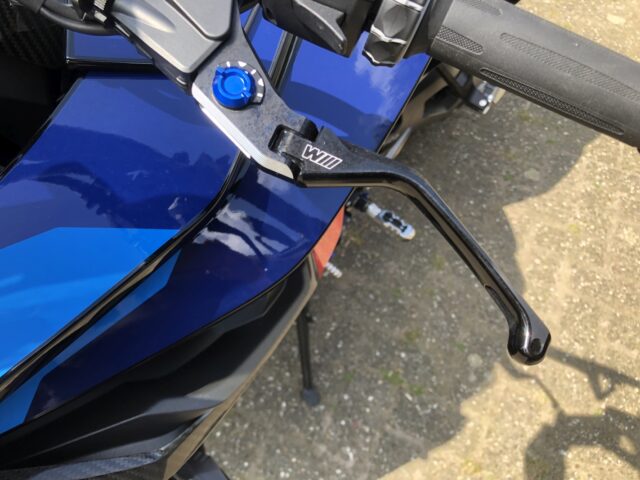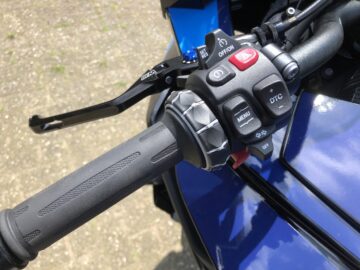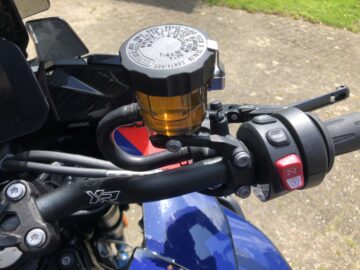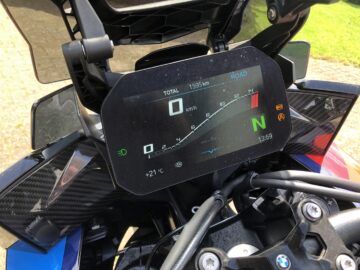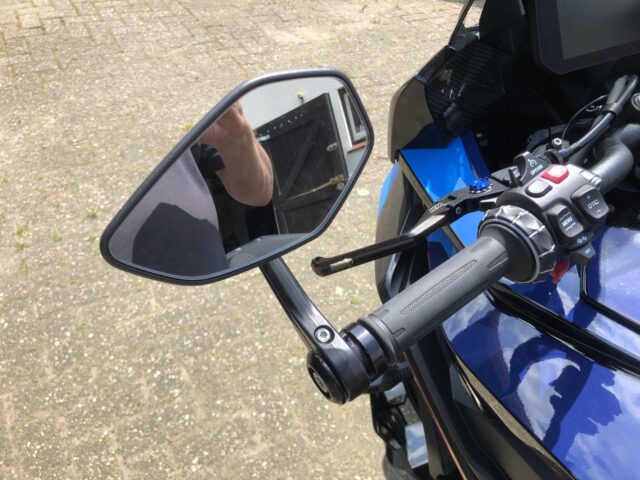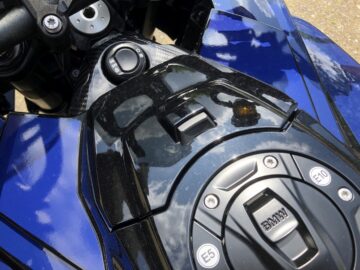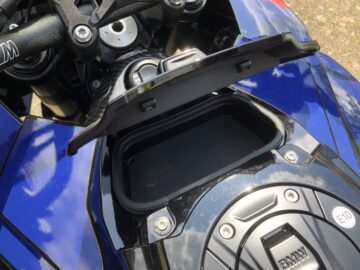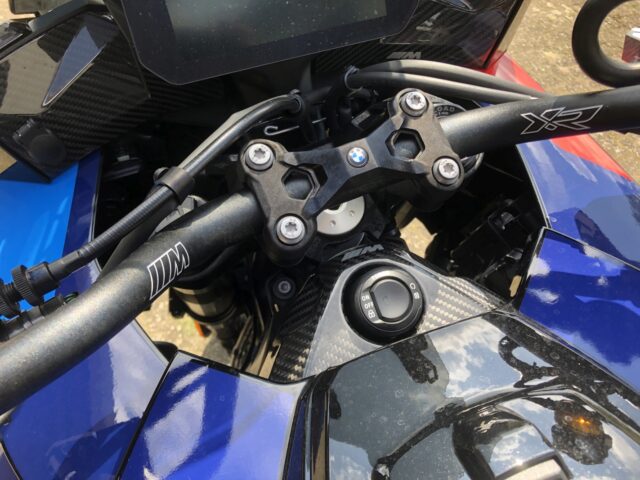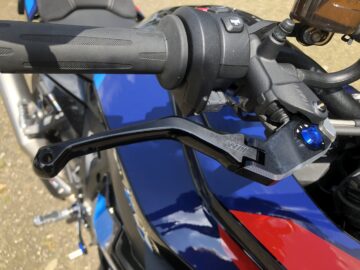Engine test – BMW M 1000 XR
The BMW M 1000 XR is the third M model. It was spearheaded by the M 1000 RR, which is derived from the BMW superbike racer. The four-cylinder engine produces 212 horsepower and its top speed exceeds 300 mph. Then came the roadster M 1000 R with 210 hp. Same engine and frame but with a somewhat less extreme sporty setup and riding position. Number three, the M 1000 XR, has to make do with 201 horsepower, but does accelerate almost as fast, more on that later.
M 1000 XR as a sports model
The M 1000 XR is the most powerful and lightest in the power crossover segment. While the four-pitter delivers the least power of this M trio at 201 hp, the driving sensation is as intense as in the M 1000 RR. The acceleration impresses. The superbike-derived M brake system is instantly responsive thanks in part to a radial brake pump, and the brakes are really excellent to dose. This is very nice when you are making a trip along winding mountain roads and one of the first turns turns turns out to be an invisible hairpin.
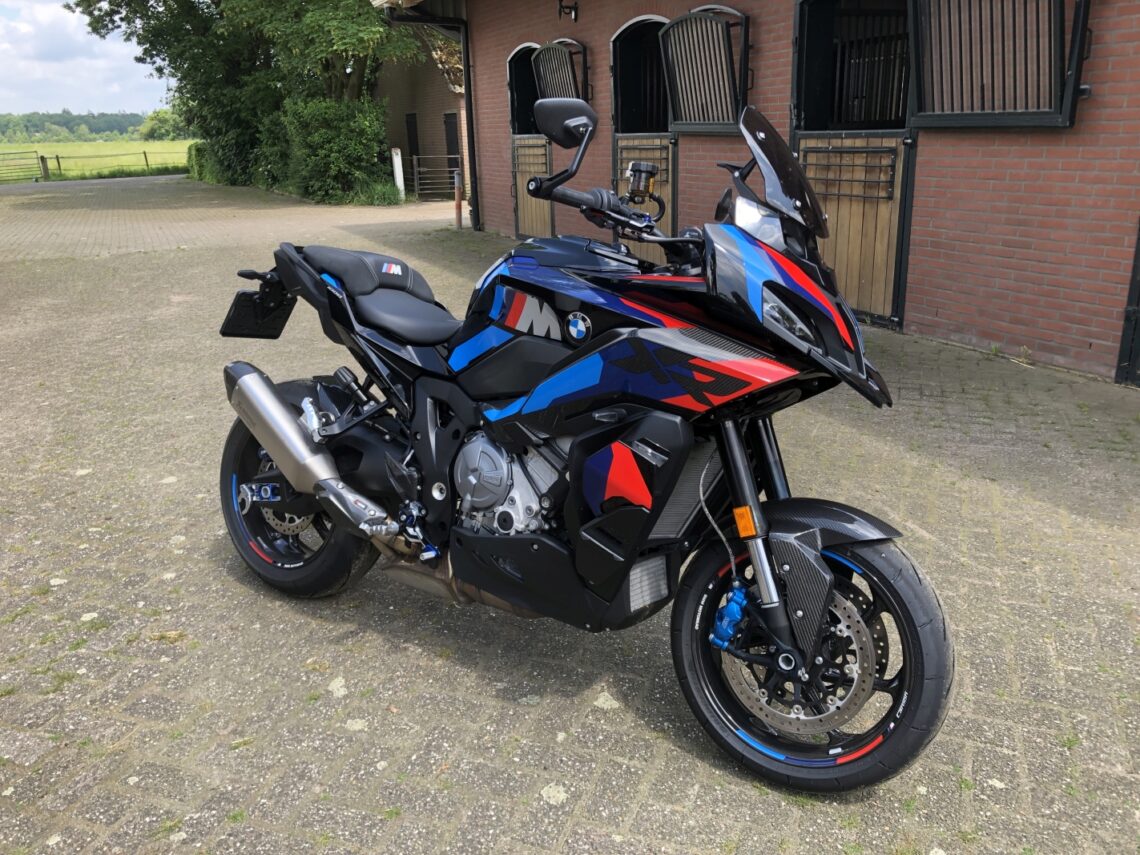
Pure fun for the eyes
First, the design: this is pure fun for the eyes. At its base is the BMW S 1000 XR, but the M looks much more aggressive. Is also due to the M Competition package that this test engine is equipped with. Does cost over five grand extra but then you have something. Just because the black-blue-red color scheme looks very nice on this motorcycle.
Carbon what beats the clock
The M Competition package especially adds a good number of components made of carbon fiber. The fenders are made of it, also the side panels of the upper fairing and the wheels are carbon fiber. Yes, indeed: rims and spokes consist entirely of this carbon-fiber-reinforced material. It is extremely stiff and lightweight. As such, the wheels contribute quite a bit to the three kilogram lower weight of the M 1000 XR with this M Competition package: from 223 kg to 200 kg. Oh yeah, you also get an Akrapovic.
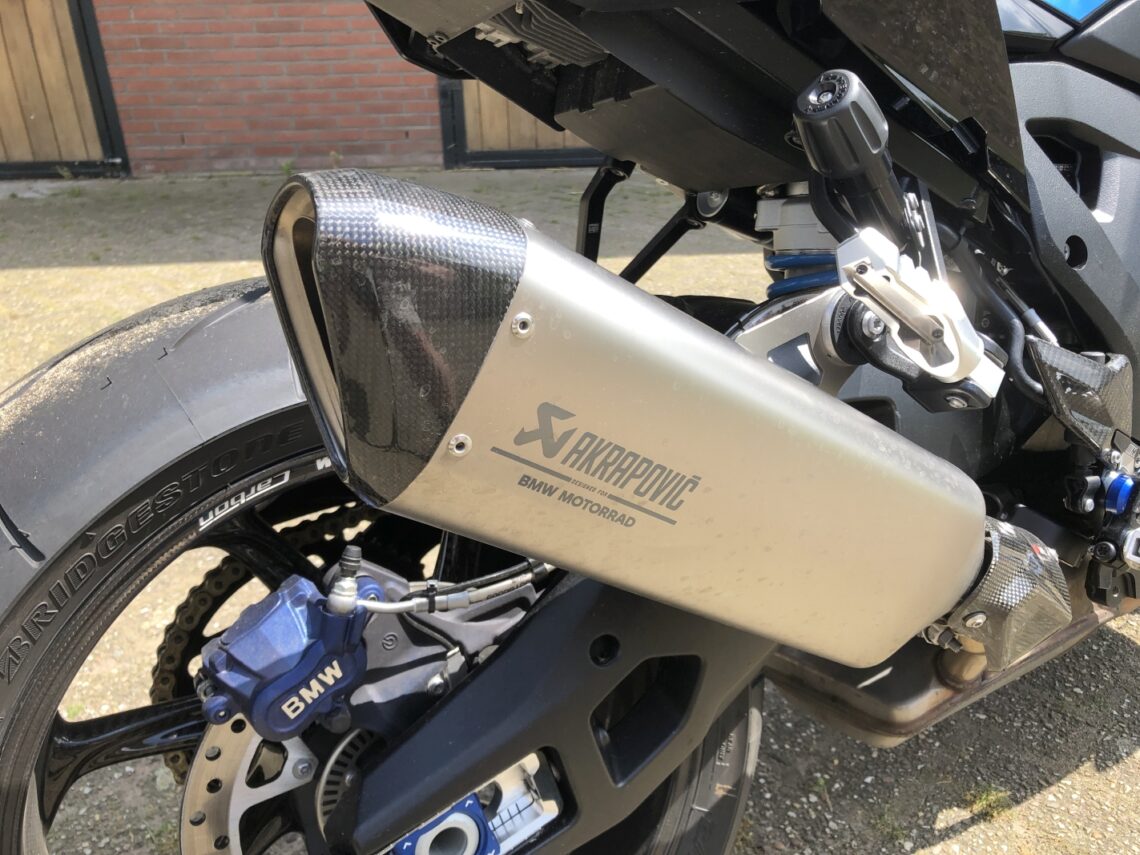
Wow, those winglets!
Yes, indeed winglets, they are on it. Less noticeable than on the M 1000 RR, but no less attractive for imaging. From the front, those winglets make the M XR look “nice and fat. From the side, the ingenious shape stands out. You can see from everything that they are designed to conduct and effectively harness airflow for high-speed stability. According to BMW, they generate up to 12 kg of downforce at 220 km/h. “This allows you to brake later for a corner and get back on the gas sooner.”
Sitting upright honing lap time
Circuit and racing language prevail when you list the specs of the BMW M 1000 XR. Hold on: M Endurance chain, Race and Race Pro riding modes, Brake Slide Assist for controlled drifts during braking, DTC Wheelie control, Launch Control, M braking system with radial brake pump as in the BMW superbike etc, etc… With the M Competition package, the bike is even prepared for use of an M GPS Datalogger and Laptrigger. Everything is really there to capture and sharpen lap times sitting upright.
Acceleration? Bizarre!
The 999cc engine is a gem. We already knew about the M 1000 RR and M 1000 R. Although in the M XR with its 201 hp it is the least powerful variant in the M series, in practice it does not feel that way at all. What acceleration power! It just keeps going, even at high speed. With a larger rear sprocket (47 teeth instead of 45 teeth on M 1000 RR) and short gears in4th,5th and 6th gears, the engine climbs eagerly in the revs up to the limit at 14,600 rpm. In 3.2 seconds you sprint from standstill to 100 km/h and 4 seconds later you tap the 200 km/h mark!!!
And that sound
At idle, the engine purrs like a humming cat. Nothing to worry about, you might say. But when you accelerate, pass the 6,000-rpm mark and ShiftCam technology has moved the intake camshaft to a “hotter” position, the sound turns into a raucous roar and, at high revs, culminates in a goosebump-inducing four-cylinder “howl. While shifting lightning fast with the fine and responsive quickshifter Shift Assist Pro.
Suspension from rock hard to slightly less hard
Shock absorption and suspension on the BMW M 1000 XR are electronically controlled and can be adjusted to your liking in many ways. The spring preload is also separately adjustable for both front and rear. With the damping in the setup Race you really feel every ledge and pebble: rock-hard suspension in other words. In Dynamic it is slightly less harsh, and in Road mode the damping is most pleasant for driving on public roads. Furthermore, you can select Rain, Road, Dynamic and Race driving modes with a switch on the right side of the steering wheel. In the Race Pro mode, which can be activated separately via OBD, you can set three stages of intervention of the driver assistance systems. And also separately. That is literally for the pros and then especially for the track.
Conclusion
The BMW M 1000 XR has two faces. If you take it easy, you can tour the city just fine. Then he sounds bashful and you don’t scare other road users into the curtains. If you turn up the gas and let the block do what it was made for, then public roads are actually no longer the ideal habitat. Then it offers too much in everything: too much power, too much acceleration, too much noise and too much speed. Then it comes into its own better on a closed circuit. Only not everyone has that at their disposal or access to it. That leaves you with only the ability for self-control, the ability to drive defensively and to look far ahead and pay attention to other road users before you “cut loose. If you have trouble with that, then the BMW M 1000 XR may not be a wise purchase. Saves you a hefty purchase price of at least 30,750 euros (May 2024) and even more than 37,000 euros with all the bells and whistles on this test specimen. Case of “reflect before you begin. Do you have enough experience and self-control, and with that attitude, do you enjoy seeking the limits on the aforementioned mountain slings? Then a visit to the BMW Motorrad dealer is recommended.


